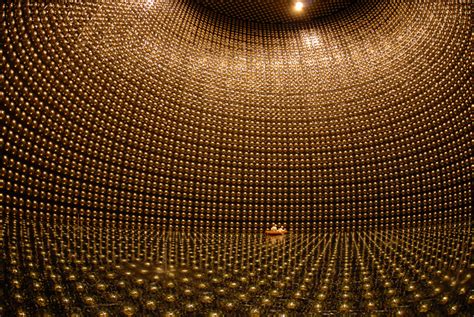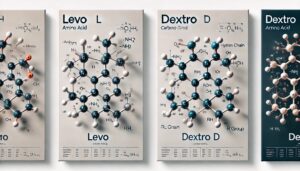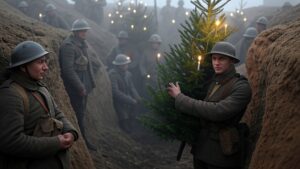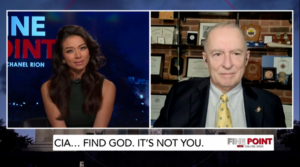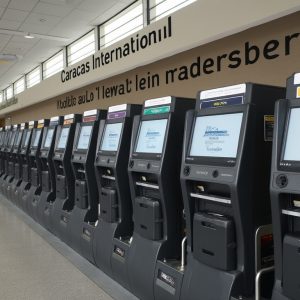FROM “WILD BILL” HICKOK AND KAMRAN KHOZAN TO NEUTRINOS
“In July 1865, “Wild Bill” Hickok shot and killed Davis Tuff in Springfield, Missouri—the first quick-draw duel on the frontier. Thus began the reputation that made him a marked man to every gunslinger in the Wild West.”
Tom Clavin,
Wild Bill: The True Story[1]
“I’m always looking out for interesting people.”
Ryuichi Sakamoto
“In the late 1950s, scientists confirmed the existence of neutrinos. Yet, decades later, the neutrino—also called the “ghost particle”—remains a mystery. What do we know about neutrinos? They are among the most abundant particles in the universe; their mass is almost zero; they travel at nearly the speed of light; and they’re a bit shy, rarely interacting with matter—not even 100 million miles of lead bricks can stop them! In fact, 65 billion neutrinos from the Sun pass through your thumbnail every second.”
Placard
Sanford Underground Research Facility
Lead, South Dakota
If you haven’t visited Deadwood, South Dakota—you should!
Even though the denizens who formerly inhabited the bars and brothels in the frontier gold-mining town, and struggled through its muddy streets, are long gone, Deadwood retains a remarkable historical charm. This was the town where “Wild Bill” Hickok was shot in the back at Nuttal & Mann’s Saloon–the No. 10 Saloon—holding his now famous “dead man’s hand” of two black aces and two black eights (with a queen of clubs as the hole card “kicker”),[2] where Calamity Jane resided, Preacher Bill was assassinated and where Teddy Roosevelt loved to visit. Historically, narrow Deadwood Gulch once hosted a population of over 10,000 gold-thirsty prospectors and frontiersmen during the heyday of the “Black Hills Gold Rush” in 1876. The frenzy began with George Armstrong Custer’s expedition to the Black Hills two years earlier and claims of the discovery of gold nearby, in present-day Custer, South Dakota. Today, the town’s population is about 1,500, swelled considerably during the summer months by hordes of smartphone- camera-toting tourists and casino gamblers.
Deadwood was definitely one of the highlights of our grand tour of the West (actually Ima’s post-retirement tour). On a warm South Dakota afternoon, Ima and I took the “Boot Hill Bus Tour”—aboard a coughing former school bus with six other visitors, the tour guide and driver—up the long ascent to Mount Moriah Cemetery. The graves of Wild Bill, Calamity Jane and Seth Bullock are there (the first two reburied in a site where the city fathers thought it would be a visiting attraction to have the two buried side-by-side; in truth, Wild Bill detested Jane and so his family protested—as a result a narrow strip of grass separates the two grave markers). The graves of several other prominent city personalities are also there, as well as a Chinese section, now mostly empty. From the graveyard you can see the building containing the deep mining shaft of the Homestake Gold Mine—the deepest and longest running gold mine in U.S. history.
Before taking the bus ride, Ima and I visited the small but fascinating Adams Museum next to the old train station. The museum contains a marvelous collection of Deadwood memorabilia: a large collection of Wild Bill-related artifacts, a Calamity Jane section, and numerous interesting photographs (including large panoramic views of the city before and after the great fire of 1879). But two placards, in particular, caught my eye: one about a unique legal case involving an Indian (indigenous American), and the other about the famous Homestake Mining Company, established in 1879 and listed on the New York Stock Exchange until 2002, the longest company in the exchange’s history.[3]
Because we could see the main buildings of the Homestake mine from our hotel in picturesque Lead, South Dakota (just a short drive up the hill from Deadwood), I was curious about the former gold mine. So, I asked the museum curator (a short, weasel-looking guy with sort of funny teeth and greasy hair) about the mine. He gave me a quick, thoroughly professional overview of the mine, mentioned he had worked there himself, and then said “today, the mine is being used for neutrino experiments.”
Neutrinos!
There was that word again.
I hadn’t thought about neutrinos—those phantom-like subatomic particles that permeate the world around us—in years. But now, on Ima and my trip out West, the word was cropping up constantly.
You’ve got to understand. I once confessed to Imogene that if I had to do it all over again, I would like to be a physicist dealing with subatomic particle research: whether it be the quest for the follow-on to the Higgs Boson (once called the God Particle), or the ongoing atom-smashing at CERN’s Large Hadron Collider. In fact, in my twelve basic assumptions for what the world will look like twenty-to-thirty years in the future, I predicted that the discovery of a particle associated with Dark Matter will upend the prevailing “Standard Model” and absolutely revolutionize everything we know about the make-up of our universe.
All this talk—suddenly, out-of-the-blue—about neutrinos brought me full-circle back to those thoughts.
And much of it had to do with Kamran Khozan, a gentleman I met for the first time on our trip, who may very well be the most interesting person I have encountered in my lifetime. (And I have been blessed to meet some very interesting people!)
I guess I need to back up and explain.
We were finishing up our time in Las Vegas—the Fremont Street “Experience,” a gondola ride at the Venetian Resort, a stroll through Caesar’s Palace, and music shows (the best of which was “The Best of Motown” by three white guys from Australia!)—when I received a call from my former student KaLeigh Long, the founder and CEO of Westwin Elements, Inc. (See my last missive.) She asked me to join her team in an ambitious fundraising push to help get her project—America’s only major cobalt refinery—up and running.
So, we drove back across Utah to Pocatello, Idaho with our good friends Gary and Madeline Gibson and then, at 4:00 a.m. the next morning, I boarded a flight from Great Falls, Idaho (via Denver) to Midland-Odessa, Texas, to join KaLeigh and her team. Our goal was to raise the tens of millions of dollars necessary to start up the first module of the refinery.
What really makes KaLeigh’s refinery unique is the remarkable proprietary process to extract the cobalt from the ore containing nickel or copper. That is where Kamran M. Khozan, a senior partner, enters the picture. Kamran is the Chairman and CEO of CVMR Inc., a world leading company involved in metal powder production[4] and uses a chemical vapor metal refining system to extract cobalt and other strategic minerals with zero impact to air, water, and soil by operating in hermetically sealed reactors. CVMR has working relationships with the U.S. Departments of Energy and Defense and many national laboratories.
Having CVMR as a partner makes KaLeigh’s refinery not only credible but doable in the near term.
Kamran is personable and a skilled communicator. He is the founder and major shareholder of several highly successful multinational corporations. Moreover, he has over 30 seminal patents in vapor metallurgy (all used by CVMR today). During our many discussions as our team traveled throughout Texas and Oklahoma—even briefing the Governor of Oklahoma at one point—I found Kamran to be, plainly and simply, the most remarkable individual I’ve ever met.
It has been my experience that truly great men have three things in common: an ability to empathize and communicate with others, a tragic experience in life they have been able to overcome, and a capacity to tell timely jokes. Kamran and I discussed a wide variety of places we had seen (from Singapore, Indonesia, the Philippines, Europe to Australia). I found his narrative of people and places to be utterly fascinating.
Throughout the pressures of multiple presentations to a variety of audiences, crammed into a short space in time, Kamran was always cheerful and upbeat in demeanor. With one exception: during a team dinner in Oklahoma City, the discussion turned to cobalt ore in the Congo and Congolese officials. Kamran turned briefly sullen. I was sitting beside him. He told me about two personal tragedies in his life: the death of his son in the Congo and the loss of his wife shortly thereafter. I placed my hand on his shoulder and offered a heartfelt prayer for Kamran that the God of Creation—my God—would supernaturally touch and mend his wounded heart.
I will always treasure that brief window in time where I was allowed to peek inside Kamran’s soul.
To my third point—Kamran is a great joke teller. His jokes were so good, in fact, that before I went to bed at night, I would record his jokes in my cellphone notes. I have heard many good jokes over the course of my lifetime and have forgotten the punchlines of almost every one of them. For example, before catching our van to the next round of presentations one evening, I sat across from Kamran in the hotel bar. He ordered a martini. “Did you hear the one,” he began, “about the old haggard-looking lady, with a cigarette drooping from her mouth, who was drinking one martini after another and becoming quite sloshed in the process. ‘Give me another marzzini,’ she said, slurring her words. Eventually the bar was ready to close, and the bartender approached her to see if she wanted a final round. A collection of empty martini glasses surrounded her. ‘Give me another marzzini,’ she bellowed, ‘and try to make it one that doesn’t give me heartburn!’ ‘The word is martini ma’am,’ the bartender politely replied, ‘and that is not heartburn—your tits are hanging in the ashtray!’”
At any rate, Kamran would begin his portion of the team presentation with a joke about a young man who recently took a speed-reading course and claimed to read Tolstoy’s classic tome War and Peace in 25 minutes! When asked by a friend what the book was all about, he said “I think it has something to do with Russia.” Then Kamran would continue, “in much the same way, I will try to explain to you the complexities of the CVMR processing method in less than 30 minutes.”
Following that introduction, Kamran would move to what he considered CVMR’s crowning achievement: the nickel refined by CVMR’s system was selected (because of its 99.9% purity) as the most suitable for Sudbury Neutrino Observatory’s (SNO) nickel tubes and other components used for capturing and measuring the velocity of neutrinos. SNO’s Project Manager, Dr. Arthur MacDonald won the Nobel Prize in 2015. Behind him, as he talked, would be a picture of the huge spheroid SNO apparatus, buried almost a mile under the Canadian landscape. (By the way, running the slide projector for Kamran’s presentations was soft-spoken and always deferential Phillip, CVMR’s chief scientist who by himself has over 90 metallurgy-related patents to his credit.)
My point: several times a day and over the course of multiple team presentations, I heard the word “neutrinos” constantly.
Then, several days later, in the Adams Museum,[5] the word cropped up again.
At the time, Ima and I were staying at the Hampton Inn perched on the highest point in Lead (pronounced Leed by the locals), South Dakota, a small city known for its gold-mining heritage, homes built on the sides of the mountains, and proximity to Deadwood. My sister Debbie and I had quickly passed through Lead on our own drive through the West a few years earlier and I had vowed to myself to return.
But back to my personal quest for neutrinos.
Down the hill from our hotel was the visiting center for the Sanford Underground Research Facility (SURF),[6] which doubles as a historical museum for the famous Homestake Mine. By far the most interesting research being done there is the search for neutrinos over a mile underground.
Neutrinos are among the most abundant particles in the universe (there are a billion times more neutrinos than there are particles that make up stars, planets and people). Neutrinos pass harmlessly through atoms that make up the earth and everything on it, produced in large quantities by the sun. Neutrinos are safe—every second of every day, trillions pass through us harmlessly—emit no radiation, have no heat, and do not change in the slightest the materials they pass through. Today’s LBNF/DUNE[7] facility, which is located about a mile underground in the former Homestake mining shaft, brings together over 1,000 scientists from more than 30 countries, and which will take over 10 more years to complete (involving the excavation of over 800,000 tons of rock), is essentially an effort to study neutrinos.
Why? A question that has puzzled scientists for years is why there is so much matter in the universe. According to all human-made models, the Big Bang should have generated equal amounts of matter and anti-matter, which in a perfect symmetry, should have annihilated each other. So, why is there matter? The study of neutrinos—in the opinion of many physicists—may hold an answer to nature’s slight preference for matter over antimatter. Indeed, DUNE experiments are possible because as neutrinos speed through the universe at just under the speed of light, they alternate between three different types or “flavors”[8]—a process called oscillation. Thus, today’s LBNF—Long-Baseline Neutrino Facility—which stretches across the Midwest from the Fermilab in Batavia, Illinois to the DUNE facility at the Sanford Lab, will allow researchers to measure just how neutrinos and antineutrinos oscillate over long distances.
How will it work? A particle accelerator at Fermilab will generate intense beams of neutrinos which will travel 800 miles through the earth’s rock to the enormous and sensitive particle detectors buried almost a mile underground at the Sanford Lab facility (buried so deep to shield the detectors from unwanted background signals). The beam’s trip takes less than four milliseconds. When the beam reaches the underground lab, some of the neutrinos and antineutrinos will collide with argon atoms (eventually some 40,000 tons of liquid argon) inside the detectors, allowing researchers to tell if neutrinos and antineutrinos oscillate in different ways.[9]
Another ongoing experiment at the Sanford Lab underground facility involves the LUX-ZEPLIN (LZ), a giant vat filled with 10 metric tons of xenon and several hundred photomultiplier tubes. The project is searching for subatomic traces of WIMPs (weakly interacting massive particles) believed to be associated with Dark Matter; scientists believe that if a WIMP hits a xenon atom in the LZ’s detector, the reaction will give off photons they can measure with unprecedented clarity. If they would find evidence of WIMPs it would open a new window into our understanding of the universe and probably pave the way for a Nobel Prize.
Wow! It is difficult for my brain—and my limited mathematical abilities—to comprehend the full extent of what is going on below ground at the Sanford Lab. But what I do know—as I tried to tell my students at CofO (whose eyes glazed over predictably as I ventured into these arenas)—that, historically speaking, we are long overdue for a revolutionary change in how scientists view of the universe and, by extension, how we view our own role in the cosmos.
Does all this pose a dilemma for me as a follower of Jesus Christ?
Not in the slightest.
Perhaps, one day, we will come to the realization that all matter, antimatter and forces of nature respond to spiritual principles revealed to the prophets of old:
“As the host of heaven cannot be numbered, neither the sand of the sea measured; so will I multiply the seed of David my servant, and the Levites that minister unto me.” (Jeremiah 33:22)
The Akers’ translation: the more scientists discover—from our macro-observations of the universe down to the most infinitesimal subatomic particles— the more there will be to find. And this search (and knowledge) will continue to grow exponentially. Otherwise, you could limit God’s blessings to His people, and that, my friend, is impossible.
[1] Tom Clavin, Wild Bill: The True Story of the American Frontier’s First Gunfighter,” New York: St. Martin’s Press, 2019.
[2] No contemporary source records the cards in Wild Bill’s final hand: the commonly accepted view probably dates back to claims made in Frank Wilstach’s book, written in 1926, Wild Bill Hickok: The Prince of Pistoleers. Moreover, my good friend and history buff Mike Combs claims the whole saloon story is fabricated and that Jack McCall actually shot Wild Bill in the back of the head across the street from the No. 10 Saloon on Aug 2, 1876.
[3] The history of the Homestake Mine is incredible. The story traces back to 1876, when the Manuel brothers and Hank Harney discovered a large deposit of gold in Lead, South Dakota. The following year they were bought out by a consortium of wealthy miners (including one who made his fortune in the Comstock Lode. By 2001, with shafts running well beyond one mile under the earth’s surface, the mine had extracted over 1,240,000 kg of gold and 280,000 kg of silver. By then, however, the low gold prices, poor ore quality and high costs forced the mine to shut down after 125 years of production.
[4] This process is used today in 3D printing, superalloys, rechargeable batteries for electric vehicles, aerospace, high performance aircraft engines, magnets, medical instruments, pharmaceuticals and dietary supplements.
[5] On the way up to the cemetery we passed the historic Victorian mansion—the Adams House—built by a wealthy Deadwood resident William Emery Adams, (1854-1934) who started out with a grocery on main street with his brother but then the business blossomed into one of the largest wholesale stores in the state. Adams was the benefactor for the museum, started in 1930, and dedicated it to the pioneers of the Black Hills of South Dakota. His life was especially tragic: he lost his wife to disease, his daughter during childbirth and her baby, all in a 24-hour period. He went to California to recover. At one point, he met his second wife Mary—who was several years younger than him—and when he died in 1934, she left the house and never returned. The house stayed empty for over half a century. Left intact was the sheet music on the piano, the library books, the china in the pantry and even cookies in the cookie jar. The house with its famous oak interiors, canvas wall coverings and stained-glass windows was restored as a house museum in 2000. For more, see Jessica Michak, “The Man Behind the Museum: W.E. Adams’ Legacy,” South Dakota Public Broadcasting, first published Oct. 3, 2016.
[6] The research facility is named for T. Denny Sanford, South Dakota’s richest man, and noted philanthropist, who donated $70 million to get the project up and running. Sanford made his fortune as the owner of Premier Bank, and Premier Bankcard, both among the nation’s leading credit card providers. As Ima and I traveled across the state, we noticed numerous medical facilities named after Sanford, particularly in his home city of Sioux Falls.
[7] DUNE stands for Deep Underground Neutrino Experiment, supported by the LBNF—Long Baseline Neutrino Facility—an international endeavor hosted by the U.S. Department of Energy’s Fermilab. They are part of today’s research effort to generate and detect neutrino particles. The project consists of: a world leading new particle accelerator, an upgraded neutrino beam and a collection of massive and sophisticated particle detectors a mile underground at the Sanford Lab facility.
[8] In the Standard Model there are three types of neutrinos: the electron neutrino, the muon neutrino and the tau neutrino. But why not four or five? Nobody knows. There are also some subatomic hints of a so-called sterile neutrino that interacts even less than the other known types.
[9] For an excellent on-line explanation of the Sanford Lab, LBNF/DUNE and what is hoped to be accomplished by the neutrino experiments, see a series of articles by the Sanford Underground Research Facility at sanfordlab.org. I have borrowed shamelessly from these articles in an attempt to explain what is happening in the field of neutrino research.
